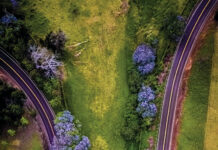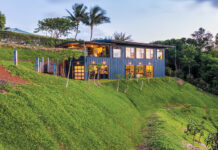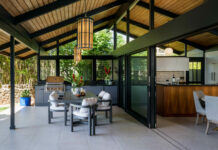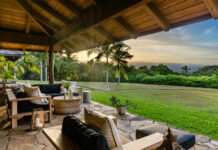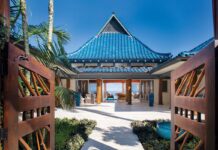Story by Paul Wood | Photography by Tony Novak-Clifford
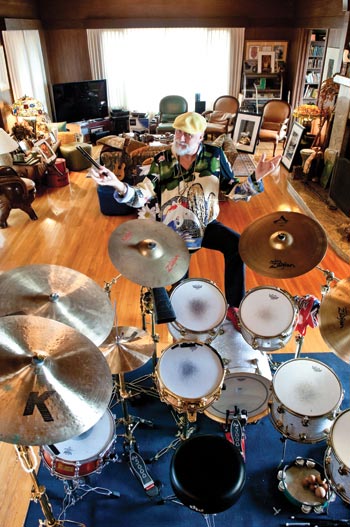 We’re going to ‘the boys’ house,’” says the six-foot-six drummer, namesake and driving force of that rock-music turbulence famously known as Fleetwood Mac. We have rendezvoused at the Kula Lodge Restaurant, and Mick is devouring a hamburger, talking all the while. Upcountry fog has piled against the mountain, and the windows of the restaurant show nothing but opaque silver-gray. Then rain begins pounding. Mick has just driven his middle-aged BMW all the way from Napili, where he spent the day on the telephone talking with “somebody” about creating a reality TV show.
We’re going to ‘the boys’ house,’” says the six-foot-six drummer, namesake and driving force of that rock-music turbulence famously known as Fleetwood Mac. We have rendezvoused at the Kula Lodge Restaurant, and Mick is devouring a hamburger, talking all the while. Upcountry fog has piled against the mountain, and the windows of the restaurant show nothing but opaque silver-gray. Then rain begins pounding. Mick has just driven his middle-aged BMW all the way from Napili, where he spent the day on the telephone talking with “somebody” about creating a reality TV show.
He’s imagining something “fun and entertaining—a rock-and-roll version of John Cleese; you know, Fawlty Towers.” But he worries about the risks involved with television exposure. “If you’ve built a mystique over thirty years, you can kiss your ass goodbye in one show.” He takes another chomp out of the burger.
At age almost 64, Mick has outgrown some of his customary shagginess, his beard now white and neatly trimmed, his long hair reduced by time to an unobtrusive pigtail. Is this hyperactive Brit finally ready to let go and vegetate by the sea?
“I can’t think of anything worse than not doing anything,” he says. (Chomp.) He talks about wanting to start a new Front Street club that will reincarnate the old Blue Max, a Lahaina nightspot that he and other drop-in rockers (Elton John, David Bowie . . .) used to frequent in the 1970s. Besides occasional reunion gigs with heyday band mates such as Stevie Nicks and Lindsey Buckingham, he leads a couple of on-again/ off-again bands—the Island Rumours Band with a raft of Maui all-stars, and the Grammy-nominated Mick Fleetwood Blues Band. He’s a two-fisted tom-tom pounder, one of those drummers who hold both sticks like wrecking hammers. But most rock drummers are content to go bang-bang in the background. Mick has always had the drive to put his drum kit in front of the band, to produce and conceive and lead, to get things done. There’s no way that the allure of Napili sunsets and mai tais would ever lull this guy into anything like relaxation.
As the rain pounds the mountainside and Mick demolishes the burger, he makes it clear that the Napili house is the actual domicile, where his wife and his ninety-four-year-old mother prefer to stay. West Maui’s plumeria-scented beaches seem to have brought out the fine-art photographer in Mick Fleetwood. His works hang in Célébrités Gallery, which is now located in Wailea. And yet—even though gallery owner Gerard Marti is sitting with us at Kula Lodge—Mick expresses a certain bewilderment at the “solo” nature of doing fine art. “When I play music, I work with a collage of people because I’m a percussionist. So when Gerard says that somebody likes my picture, I don’t understand that. I’m a team player.”
Gerard, a native Parisian whose cool poise salves the big drummer’s hyperactivity, says quietly, “It’s working, Mick. We sold another one yesterday.”
Then the rain eases, and the subject shifts again as fast as a drum roll. Let’s go. The Kula house, says Mick, is a “house that’s heading toward becoming a home. It’s been a music house for eight years.” He’s used it primarily to rehearse with his famous friends. We caravan up an obscure one-lane mountain road and turn onto an even more obscure gravel drive screened by mature cypress trees and fat-canopied jacarandas. We finagle the locked gate and spill into eleven acres of parkland sparkling with trees and downhill view-lines. Though the high, sprawling house is built of wood, not stone, the proportions and dimensions of the property feel very much like an English country manor waiting for visitors.

